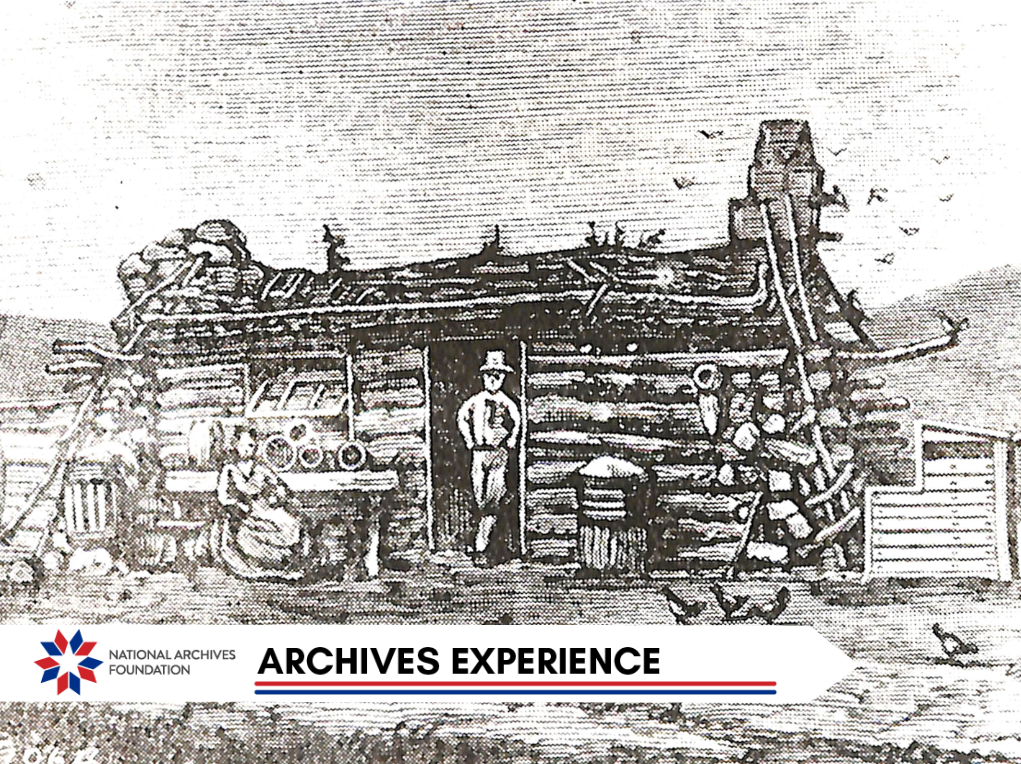Archives Experience Newsletter - April 16, 2024
You’ve Got Mail!

On the eighteenth of April, in Seventy-Five:
Hardly a man is now alive
Who remembers that famous day and year.
The urgency of Paul Revere’s historic ride proves that even in the earliest days of our nation’s history, there was often a need for haste to get our messages delivered. What we now call “snail mail” was never going to be fast enough for a people anxious for independence.
As our borders expanded, our desire to overcome the barriers of distance and time became a common thread in our shared story. Several pivotal innovations redefined our ability to connect with one another and get our messages across.
In this issue
The Pony Express: A Sprint Across the West
Leavenworth & Pike’s Peak Express Company galloped its way into our collective imaginations on April 3, 1860. Braving the rugged terrains of the Wild West, it promised unprecedented speed in delivering messages, covering the expanse from Missouri to California in a mere 10 days. Better known as the Pony Express, this network of riders became the lifeline of communication across vast distances. Although its operation was short-lived, ending after just 19 months, the Pony Express remains a legendary chapter in the story of American communication. Below is an image of Frank E. Webner, a pony express rider from 1861.

“Frank E. Webner, pony express rider,” ca. 1861
National Archives Identifier: 513351
The Telegraph: Wiring the Union Together
The introduction of the telegraph in the 1840s made it possible to transmit messages over long distances almost instantaneously. On June 16, 1860, Congress authorized a bill to construct a transcontinental telegraph line. Only 16 months later, on October 26, 1861, San Francisco was in direct contact with New York City. The hard riding days of the Pony Express officially ended on that same day (but its final letters weren’t delivered until November). The telegraph’s strategic importance came to the forefront during the Civil War, when President Lincoln famously utilized it to direct troops and stay informed about battlefield developments.

Treasury Department, Telegraph Office
National Archives Identifier: 158884104
Air Mail: Soaring Messages
After the Wright brothers’ flight in 1903, the United States Postal Service met the challenge of keeping up with the speed of innovation. The inauguration of air mail service on May 15, 1918, drastically reduced the time it took for cross-country mail delivery. Letters and packages could now be delivered in mere days. In 1925, the Post Office contracted out its air mail service, including to a new company run by Charles Lindbergh, a year before his famous crossing of the Atlantic Ocean.

Truman Signing Air Mail Bill
National Archives Identifier:
348542268

30th Anniversary of Air Mail at
Washington National Airport
National Archives Identifier:
325596801
Email: The Digital Revolution
In 1971, the first email, including the ”@” symbol, was sent over a computer network established by the Advanced Research Projects Agency of the United States Department of Defense. Flash forward two decades, and email had completely transformed the way we communicated. Mail delivery times of days or weeks were suddenly now just seconds. George H.W. Bush became the first President to use email, and Bill Clinton was the first to have a public account, sending off only two during his tenure, from his AOL address ClintonPz@aol.com. One was to 77-year-old astronaut John Glenn who was aboard the space shuttle Discovery at the time. Below is a photo of Clinton sending the first presidential email, alongside a photo of an early email sent to Clinton from Prime Minister of Sweden, Carl Bildt. They were testing the “global Internet system,” while also recognizing that they were some of the first to use it.

President Bill Clinton Sending the First Presidential Email Image
National Archives Identifier: 236741771

Print-Out of 1994 E-Mail from Carl Bildt to President Bill Clinton
National Archives Identifier: 237616175
From the daring rides of the Pony Express to the ding of email delivery, these innovations highlight the American journey toward a more connected and accessible world. With each step, we continued our quest to bridge distances and connect our citizens










